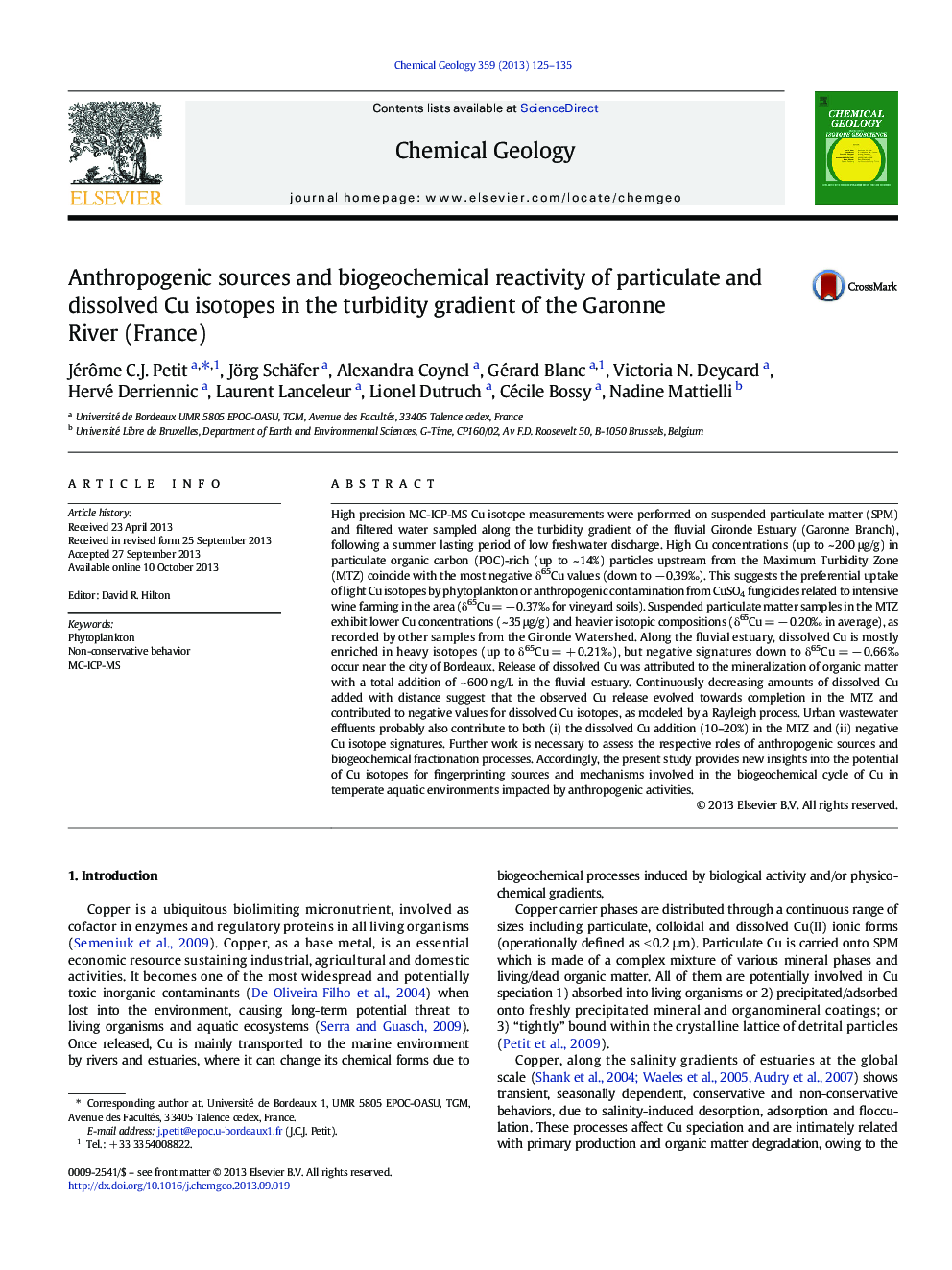| کد مقاله | کد نشریه | سال انتشار | مقاله انگلیسی | نسخه تمام متن |
|---|---|---|---|---|
| 4698920 | 1637610 | 2013 | 11 صفحه PDF | دانلود رایگان |
• Copper enrichments in particles are related to primary production or anthropogenic contamination.
• Organic matter mineralization is accompanied by an addition of dissolved Cu.
• Phytoplankton may assimilate preferentially light copper isotopes.
• Dissolved Cu is enriched in heavy Cu isotopes.
• Anthropogenic sources are enriched in light Cu isotopes.
High precision MC-ICP-MS Cu isotope measurements were performed on suspended particulate matter (SPM) and filtered water sampled along the turbidity gradient of the fluvial Gironde Estuary (Garonne Branch), following a summer lasting period of low freshwater discharge. High Cu concentrations (up to ~ 200 μg/g) in particulate organic carbon (POC)-rich (up to ~ 14%) particles upstream from the Maximum Turbidity Zone (MTZ) coincide with the most negative δ65Cu values (down to − 0.39‰). This suggests the preferential uptake of light Cu isotopes by phytoplankton or anthropogenic contamination from CuSO4 fungicides related to intensive wine farming in the area (δ65Cu = − 0.37‰ for vineyard soils). Suspended particulate matter samples in the MTZ exhibit lower Cu concentrations (~ 35 μg/g) and heavier isotopic compositions (δ65Cu = − 0.20‰ in average), as recorded by other samples from the Gironde Watershed. Along the fluvial estuary, dissolved Cu is mostly enriched in heavy isotopes (up to δ65Cu = + 0.21‰), but negative signatures down to δ65Cu = − 0.66‰ occur near the city of Bordeaux. Release of dissolved Cu was attributed to the mineralization of organic matter with a total addition of ~ 600 ng/L in the fluvial estuary. Continuously decreasing amounts of dissolved Cu added with distance suggest that the observed Cu release evolved towards completion in the MTZ and contributed to negative values for dissolved Cu isotopes, as modeled by a Rayleigh process. Urban wastewater effluents probably also contribute to both (i) the dissolved Cu addition (10–20%) in the MTZ and (ii) negative Cu isotope signatures. Further work is necessary to assess the respective roles of anthropogenic sources and biogeochemical fractionation processes. Accordingly, the present study provides new insights into the potential of Cu isotopes for fingerprinting sources and mechanisms involved in the biogeochemical cycle of Cu in temperate aquatic environments impacted by anthropogenic activities.
Figure optionsDownload as PowerPoint slide
Journal: Chemical Geology - Volume 359, 14 November 2013, Pages 125–135
